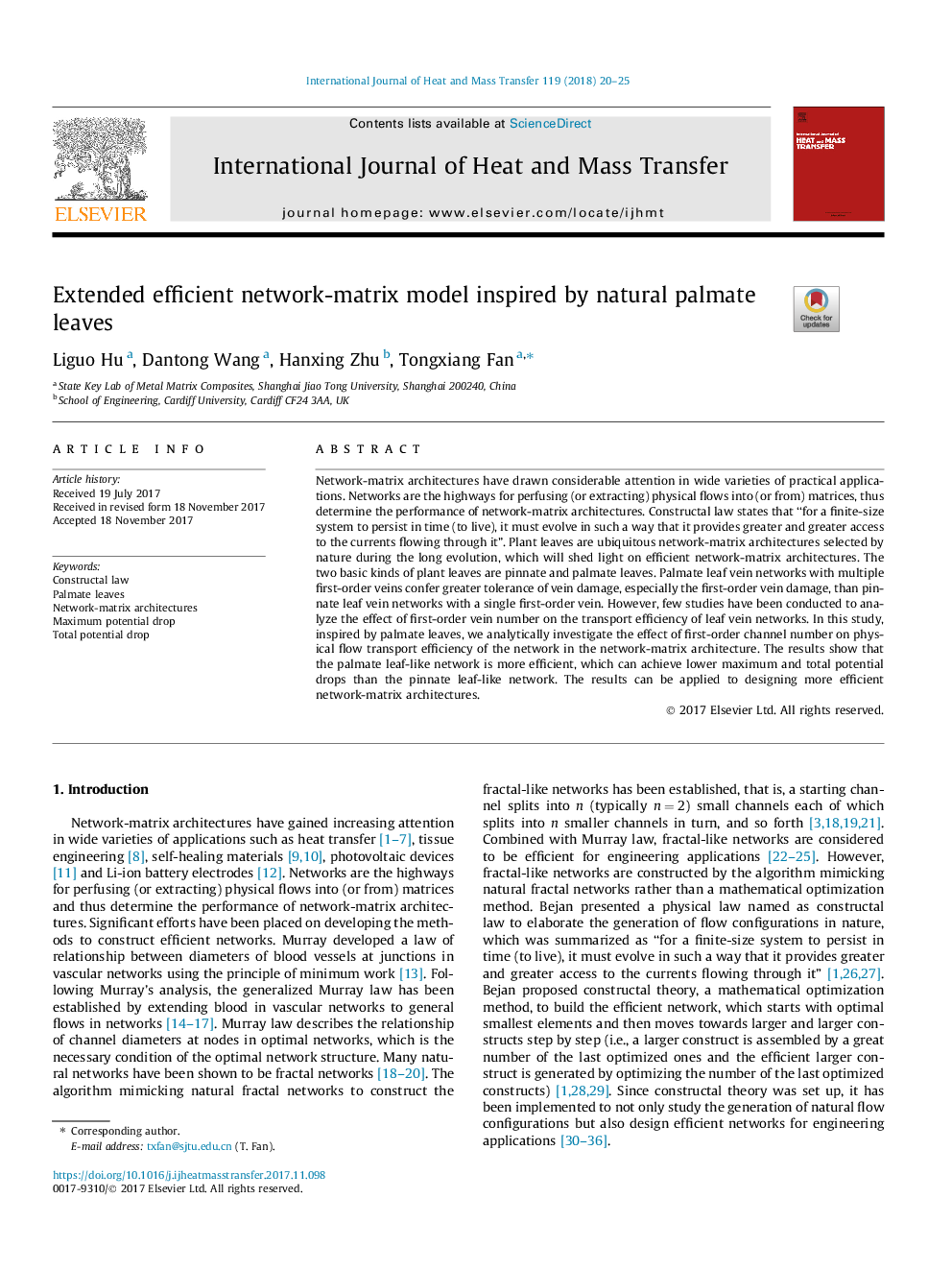| Article ID | Journal | Published Year | Pages | File Type |
|---|---|---|---|---|
| 7054582 | International Journal of Heat and Mass Transfer | 2018 | 6 Pages |
Abstract
Network-matrix architectures have drawn considerable attention in wide varieties of practical applications. Networks are the highways for perfusing (or extracting) physical flows into (or from) matrices, thus determine the performance of network-matrix architectures. Constructal law states that “for a finite-size system to persist in time (to live), it must evolve in such a way that it provides greater and greater access to the currents flowing through it”. Plant leaves are ubiquitous network-matrix architectures selected by nature during the long evolution, which will shed light on efficient network-matrix architectures. The two basic kinds of plant leaves are pinnate and palmate leaves. Palmate leaf vein networks with multiple first-order veins confer greater tolerance of vein damage, especially the first-order vein damage, than pinnate leaf vein networks with a single first-order vein. However, few studies have been conducted to analyze the effect of first-order vein number on the transport efficiency of leaf vein networks. In this study, inspired by palmate leaves, we analytically investigate the effect of first-order channel number on physical flow transport efficiency of the network in the network-matrix architecture. The results show that the palmate leaf-like network is more efficient, which can achieve lower maximum and total potential drops than the pinnate leaf-like network. The results can be applied to designing more efficient network-matrix architectures.
Keywords
Related Topics
Physical Sciences and Engineering
Chemical Engineering
Fluid Flow and Transfer Processes
Authors
Liguo Hu, Dantong Wang, Hanxing Zhu, Tongxiang Fan,
